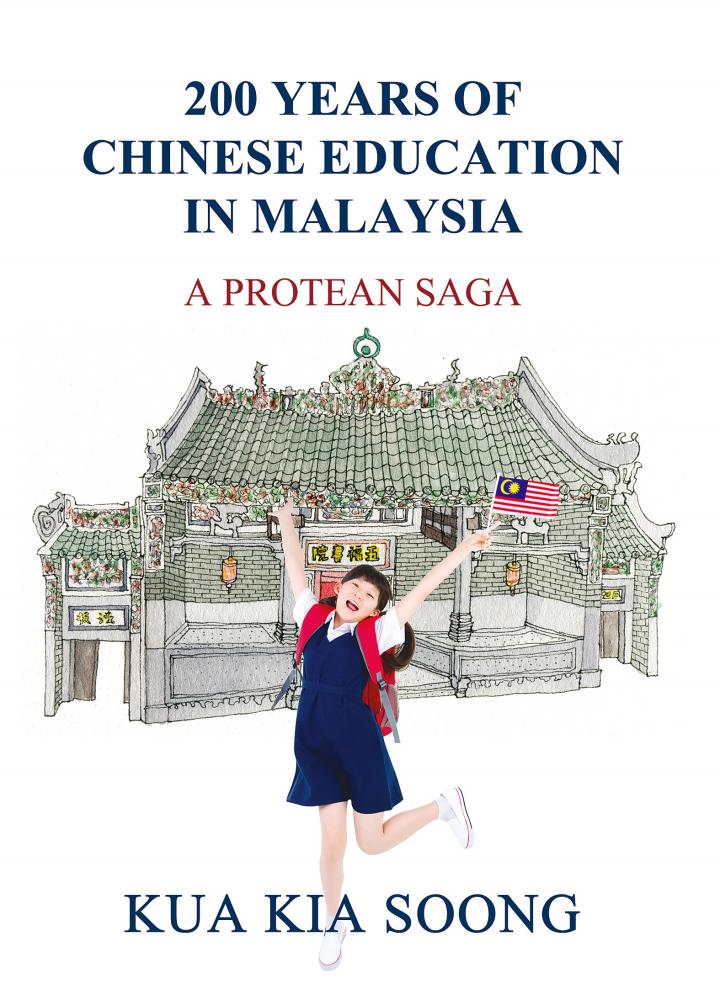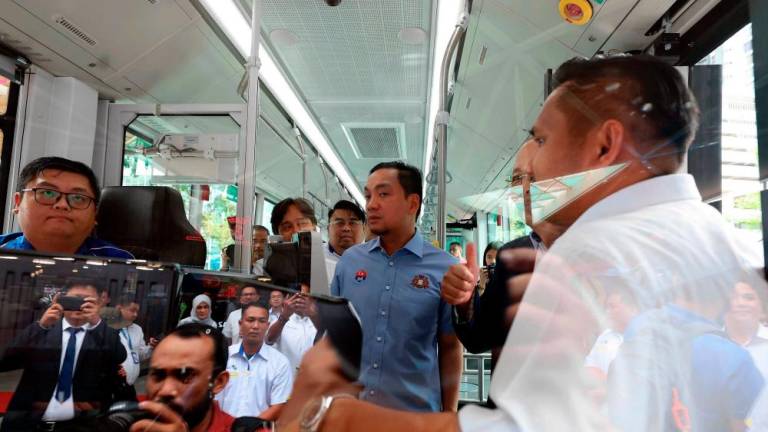MY book 200 Years of Chinese Education in Malaysia: A Protean Saga celebrates the fact that our schools have been nurtured by the community since their inception in the 19th century, well before colonialism. This achievement is worthy of national pride and dignity for there are few if any comparisons of such an effective community-run education system anywhere else in the world.
For the dignity of Malaysians and the betterment of our society, the case for the preservation and improvement of our diverse education system rests on three vital factors: (i) celebrating our heritage; (ii) promoting inclusivity and (iii) nurturing learning efficacy.
Celebrating our heritage
The first Chinese school in the peninsula was the “School of the 5th Happiness” in Penang in 1819. While some scholars have quibbled about the fact that the first Chinese school was much earlier, this school still stands today on Lebuh Chulia, Georgetown as inspiring evidence of this 200-year-old vernacular education history.
By the 20th century, the independence of the Chinese school system was already established. Its reliance on the Chinese community itself went beyond financial autonomy since the British colonial authorities “... were so impressed by the high level of communal organisation among Malayan Chinese that they left them virtually alone to manage their own affairs”. This struggle to preserve and promote the language, education and culture of the Chinese in Malaya involved the active mobilisation of the whole Chinese community through the guilds and associations. In 1918, the philanthropist Tan Kah Kee founded the Nanyang Overseas Chinese High School in Singapore.
Nonetheless, vernacular education of the various ethnic communities began to grow. By 1916, there were 693 Malay schools in Malaya and by 1922, there were 128 Tamil schools in the Straits Settlements and the Federated Malay States.
By the eve of World War II, the foundation of the Chinese education system up to secondary level had been laid. The War Years, from 1941-1945, were the darkest years for the Chinese community in general. Chinese schools were not only suspended, a reign of terror was imposed on Chinese teachers and students by the Japanese occupiers. The anti-imperialist current in the Chinese schools coupled with the bitter war between Japanese fascism and Chinese nationalists in mainland China explained the extreme cruelty meted out by the Japanese occupiers towards Chinese school teachers and students in Malaya. Many were tortured and killed during the Japanese Occupation.
In 1953, the pinnacle of the Malayan Chinese education system – Nanyang University at Singapore – was achieved. It received inspiring support of Chinese Malayans of all classes – from the tycoon to the trishaw rider.
Promoting inclusivity
Despite the growth of Malay, Chinese and Tamil education in the country, the colonial government set about forging an exclusive policy of divide-and-rule in an effort to do away with non-Malay-medium education. This was partly because the Chinese and Tamil schools had become centres of the anti-colonial struggle.
The declaration of Emergency in 1948 enabled the colonial government to control the Chinese schools more easily. In 1950, the Barnes Committee was set up to inquire into Malay vernacular education but it went beyond its terms reference to propose the abolition of separate vernacular schools and their replacement with a single national-type school system using only English and Malay. At the same time, another committee (Fenn-Wu) was appointed to look into Chinese education in Malaya in 1951. In contrast to the Barnes Committee, it reported in favour of the Chinese school system, stressing that this system was totally consistent with the building of a Malayan national consciousness.
The Fenn-Wu Report did point out the weaknesses in the Malayan Chinese education system, such as the shortage of qualified teachers, facilities and equipment and recommended a hefty increase in government subsidy to the Chinese schools. At the time, the Chinese community still had to bear about 90% of the total cost of Chinese education.
The “Unity in Diversity” spirit among the Malay, Chinese and Tamil education lobbies can be seen in the Hari Raya message by Lim Lian Geok, the Jiao Zong leader published in Utusan Melayu in 1956. He never failed to encourage his Malay and Tamil compatriots to promote Malay and Tamil secondary education.
Thus, by 1957, there were already 2,198 Malay, 1350 Chinese primary schools and 908 Tamil primary schools even though their respective populations were half or even a third what they are today. While there were 263 English secondary schools at the time of Independence, there were also 86 Chinese secondary schools in the country.
At Independence, the spirit of inclusivity of all Malayan languages and cultures was entrenched in Article 152 of the Federal Constitution 1957:
“152. (1) The national language shall be the Malay language .... Provided that (a) no person shall be prohibited from using (otherwise than for official purposes) or from teaching or learning any other language”; and (b) nothing in this Clause shall prejudice the right of the Federal Government or of any State Government to preserve and sustain the use and study of the language of any other community in the Federation.”
After Independence, the Education Act of 1961 violated the inclusivity spirit of the Federal Constitution when section 21(2) made the existing Chinese and Tamil primary schools liable to be converted to English/Malay-medium schools at the stroke of the minister of Education’s pen. Due to financial constraints, more than half the Chinese Secondary Schools in the country had little choice but to comply with the ultimatum and they converted to English-medium ‘National-Type’. The rest – about 14 at the time – refused to give in and hence became the first “Malaysian Independent Chinese Secondary Schools” (MICSS) in 1962.
After 1969, there was an upsurge in enrolment in Chinese vernacular schools especially with the launching of the Revival Movement in 1973. This has been widely recognised as a response to post-1969 government policies and many English-educated Chinese parents also began to send their children to Chinese-medium schools. Before long, there were 60 MICSS in total. While their “Unified Examination Certificate” (UEC) was established in 1975, the government has stubbornly refused to recognise the certificate even though it is recognised all over the world, including NUS.
Since the nineties, the 1,285 or so Chinese primary schools and 60 Independent Chinese Secondary Schools have not been allowed to increase in number despite the doubling of the ethnic Chinese population compared to 1957. The increasing numbers of non-Chinese pupils in the Chinese-medium primary schools (nearly 100,000), effectively means that the shortage of Chinese schools is today rendered even more acute even as they promote this spirit of inclusivity.
Nurturing learning efficacy
Perhaps the most important reason for vernacular education is the fact that children, especially those from less privileged families, learn better in their mother tongue. Learning efficacy through the mother tongue has been recognised and promoted by Unesco since 1953. When we recall the fate of the Orang Asli children who ran away from their school at Pos Tohoi, Gua Musang in 2016, this principle should be more seriously heeded. In such cases, parents of children from poorer backgrounds are more likely to communicate with teachers and participate in their children’s learning. The tragedy of poorer students dropping out of secondary schools through the ineffectiveness of “Remove Classes” point to the need for good vernacular schools in the country to cater for such students.
Unity in diversity
Celebrating 200 years of vernacular education is an opportunity to share this heritage with our Malaysian brothers and sisters and to show how this is an essentially Malaysian accomplishment. Apart from the contribution of our schools to nurturing good citizens and productive human resources for the country, the country should know the facts regarding the resources the community has contributed to subsidise Malaysian education all these 200 years. Since our Chinese schools are attracting the enrolment of Malay, Indian and other non-Chinese pupils numbering nearly 100,000 today, this makes such sharing all the more important.
Even as we celebrate our achievements, it gives us the occasion to stock take. Unfortunately, the status of mother tongue education is still not secure in this country even after the new Pakatan Harapan government took over in 2018. The Education Act 1996 does not give legal backing to Chinese or Tamil schools in this country and the new PH government still refuses to recognise the Unified Examination Certificate of the Independent Chinese Secondary Schools.
Overcrowding is a serious problem in all the Chinese schools since the government does not allow the establishment of new Chinese schools despite the ever-increasing demand with population growth. Large classes pose a major obstacle in any attempt to provide quality education. Class size exceeding 50 pupils is common in all the Chinese schools. There is also the perennial problem of teacher shortage which is compounded by the fact that the government does not recognise the UEC. The 21st century requires a quality of education that can equip our students with the new skills to flexibly meet the new demands in the years ahead.
Finally, apart from the fact that the right to vernacular education is guaranteed in Article 152 of the Federal Constitution, it is a human right affirmed in the Universal Declaration of Linguistic Rights, Barcelona 1996 and the celebration of Feb 21 as the UN-sponsored “International Mother Language Day” to give dignity to vernacular education of all peoples.
Kua Kia Soong is adviser to Suaram. Comments: letters@thesundaily.com















